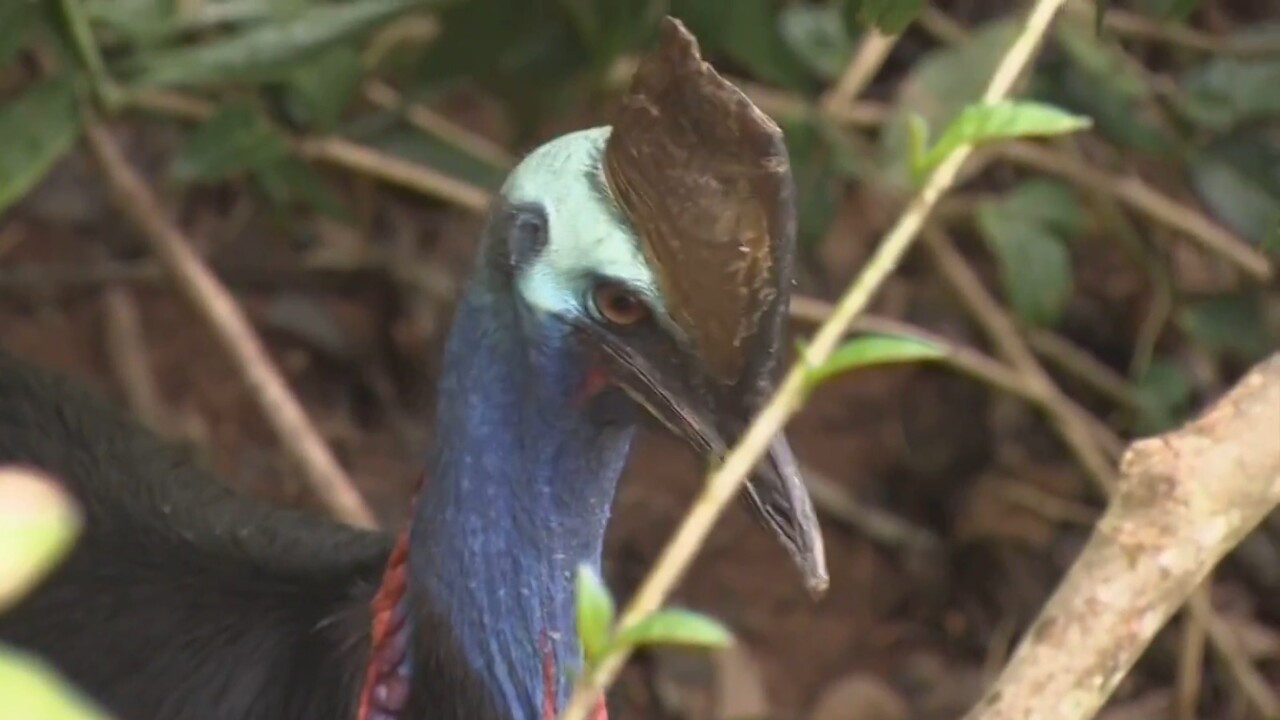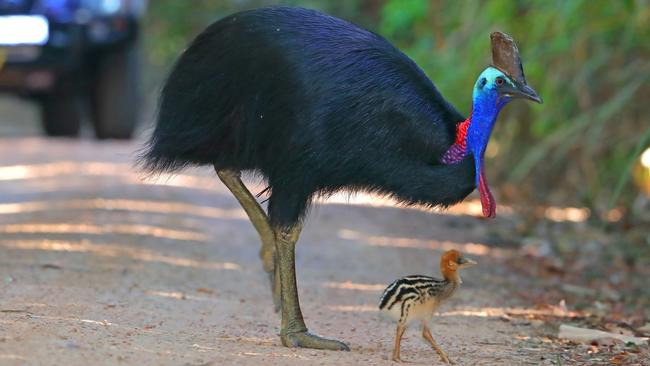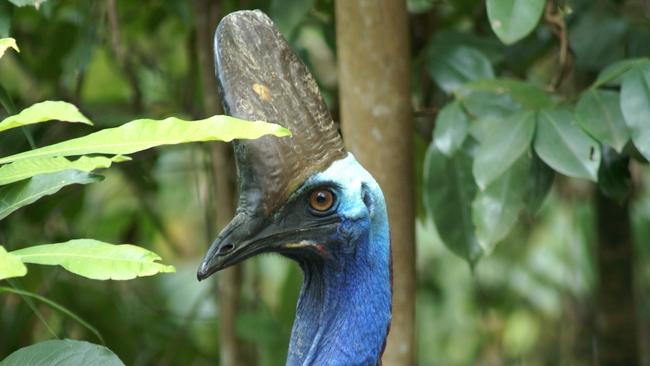Cassowary comeback may be a feather in Far North Queensland’s conservation cap, Daintree residents say
Daintree residents are calling for a new survey of an endangered species across the Wet Tropics.

Cairns
Don't miss out on the headlines from Cairns. Followed categories will be added to My News.
A big bird boom may be occurring deep in the heart of the world’s oldest living rainforest.
Once seldom seen in the wild, Daintree lowlands residents are calling for a cassowary count across the Wet Tropics, almost a decade on from the last survey into the endangered species.
Daintree businessman, Lawrence Mason, said he once feared the flightless beasts would go the way of the dodo.
Today, he said the “living dinosaurs” could be seen in abundance.

“I did guided walks in the 90s where I’d tell people cassowaries were on the brink of extinction and I believed that,” Mr Mason, 55, said. “There was an alarming drop off (in the Daintree) through the 70s that coincided with a lot of clearing of the rainforest.”
The last count, conducted in 2014, recorded 4400 cassowaries in the Wet Tropics.
But CQ University Associate Professor Nathan English said new quantitative research could improve conservation, management and help better understand the tall bird.
“What scientifically informed counts do is give us an unbiased view of how many individuals there are,” the Leader of the Flora, Fauna and Freshwater Cluster (FFFC) said.
“It can also spur action to improve conservation. That could be around making developments more cassowary friendly, bettering wild pigs and dogs management and traffic controls.
“But if the population is increasing you can see what you are doing well and say, ‘Let’s do more of that.’”

As a keystone species that draws visitors from across the globe to the Wet Tropics, Assoc Prof English said cassowaries were more likely than other species to draw funding.
“Conservation dollars are finite,” he said. “Every dollar that gets spent needs to get a return on investment.
“If we can couch conservation projects in economic terms, in this case eco-tourism, those are the projects that get priority. And we know that people want to see a cassowary in the wild.”
A close encounter with the six-foot-tall bird was still awe inspiring, Mr Mason said.
“Seeing a cassowary in the rainforest is like being up close with an elephant in Africa,” he said.
“The fact that these creatures seem to be coming back is a great sign that we’re living with the environment, rather than against it.”
More Coverage
Originally published as Cassowary comeback may be a feather in Far North Queensland’s conservation cap, Daintree residents say




